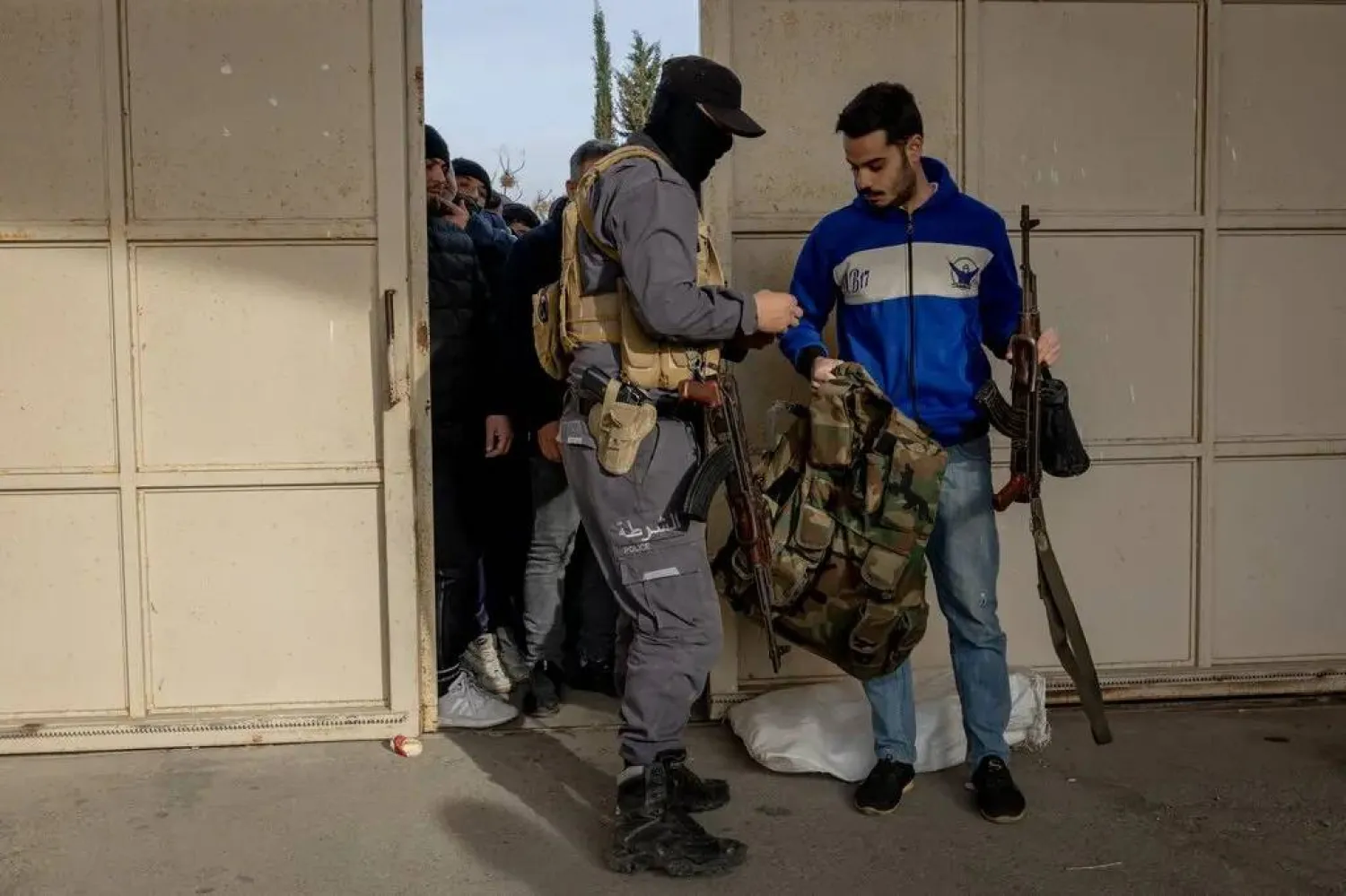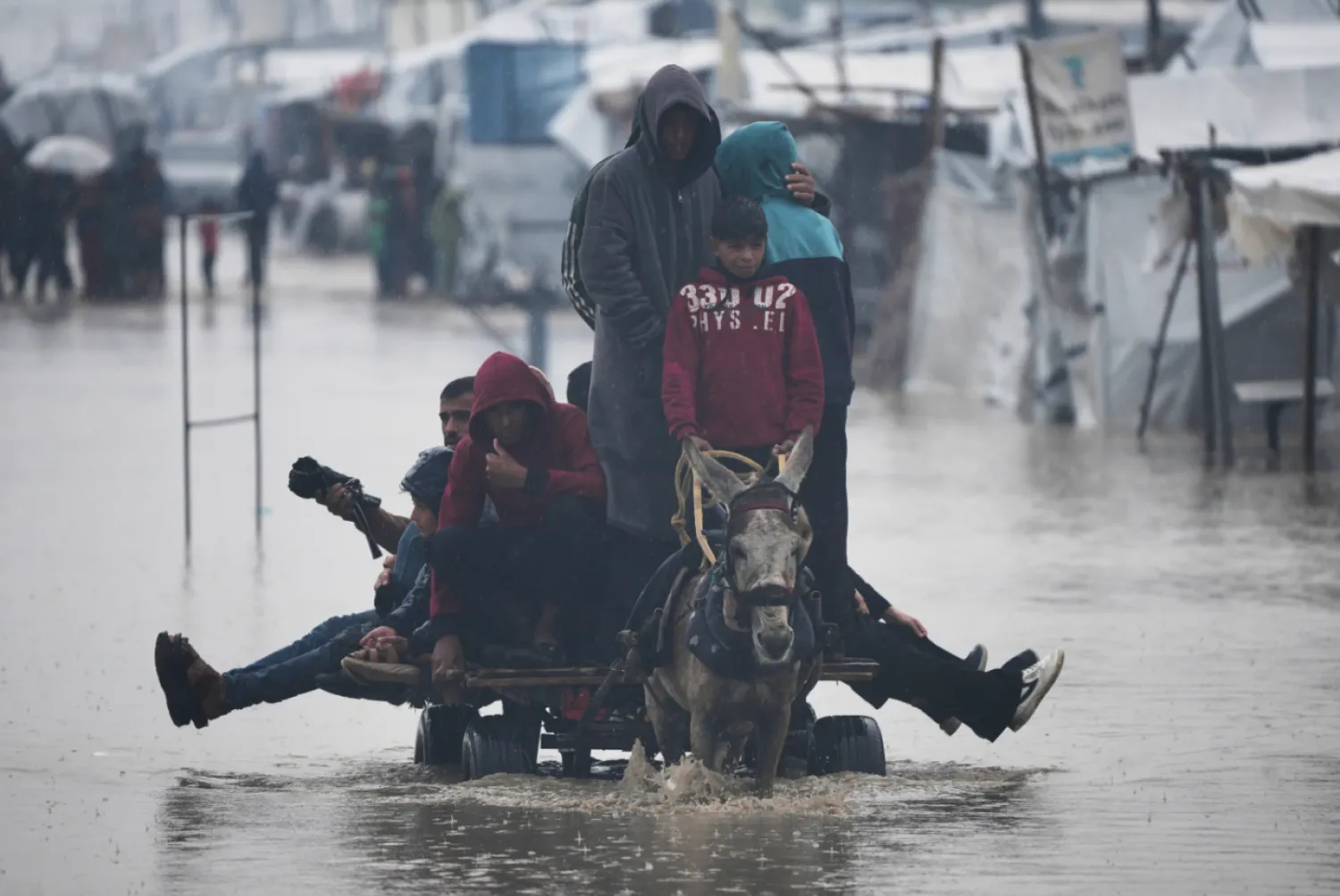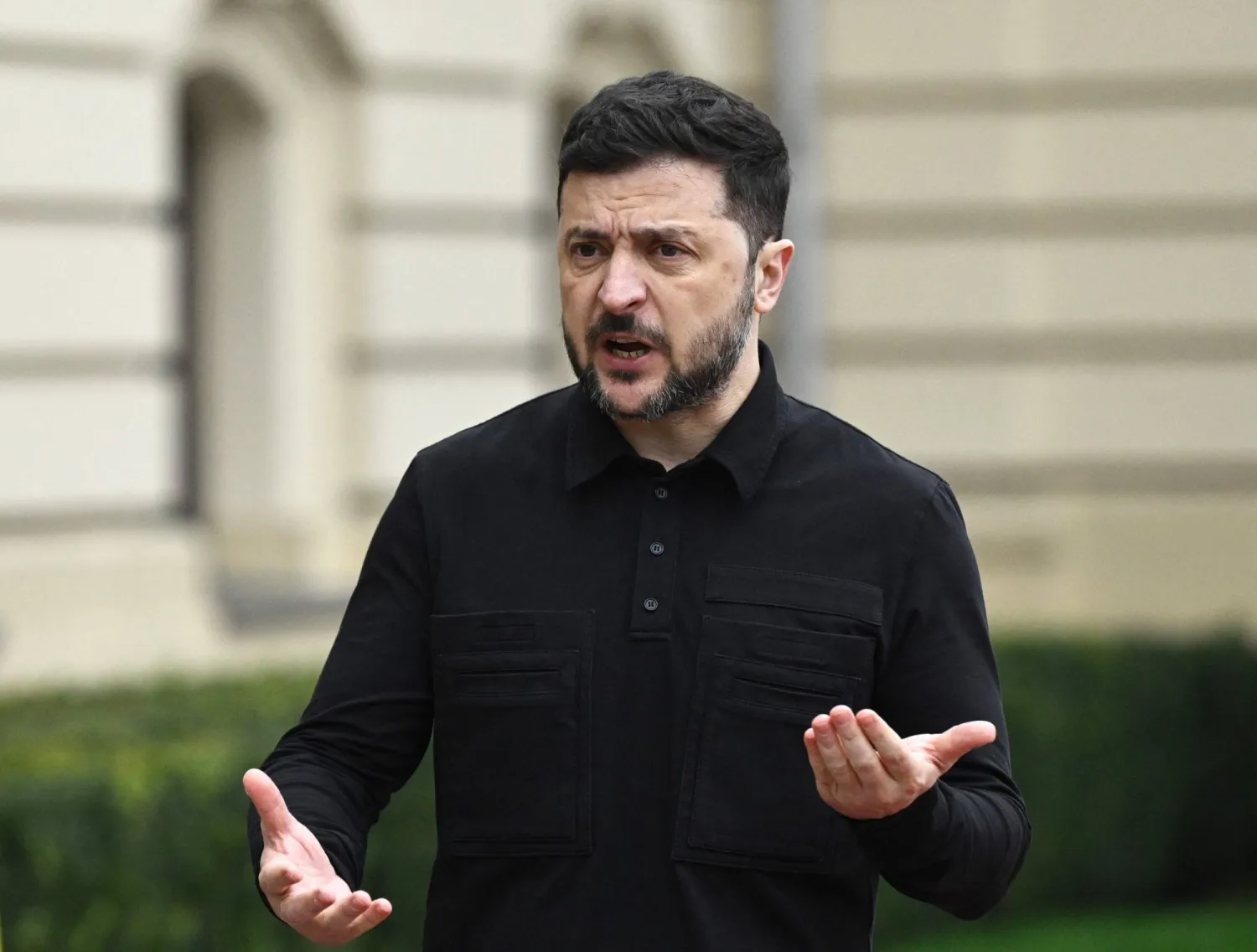Syria and Israel, through American mediation, were on the verge of signing a peace agreement in February 2011, just before the “Arab Spring” protests broke out. The American mediator drafted an agreement that “went further than any previous document.” It included Damascus’ pledge to sever “military ties” with Iran and the Hezbollah party in Lebanon and “neutralizing” any Israeli threat, in exchange for its reclaiming of the Israeli-occupied Golan Heights, based on the June 4, 1967 border.
This was confirmed to Asharq Al-Awsat by officials who were involved in the negotiations, which were held by Syrian President Bashar Assad and Israeli Prime Minister Benjamin Netanyahu and mediated by American envoy Frederic Hof. The negotiations also included at least two meetings with the participation of late Syrian Foreign Minister Walid al-Muallem, legal advisor Riad Daoudi and former US Ambassador to Damascus Robert Ford. Then US President Barack Obama and his Vice President Joe Biden, the current president, were aware of these secret negotiations, which ex-Secretary of State Hillary Clinton was also heavily involved in. No official statement over these negotiations was made by Damascus, which has long expressed its commitment to restoring all Golan territories and maintaining the “strategic relationship with Iran”.
Enticing offer
Former US Secretary of State John Kerry shed light on the secret talks. In his book “Every Day Is Extra”, he revealed that Assad had sent Obama a proposal to establish peace with Israel. When informed of the proposal, Netanyahu was very surprised with it. Kerry revealed that when he served as chairman of the Senate Foreign Relations Committee, he visited Damascus in 2009 where he met with Assad to tackle a number of issues including a peace deal with Israel given that previous attempts by the governments of Yitzhak Rabin, Shimon Peres, Ehud Barak and Netanyahu (1996-1999) ended in failure.
Kerry wrote: “Assad asked me what it would take to enter into serious peace negotiations [with Israel], in the hope of securing return of the Golan Heights, which Syria had lost to Israel in 1967. I told him that if he were serious, he should make a private proposal.”
“He asked what it would look like. I shared my thoughts. He instructed his top aide to draft a letter from Assad to President Obama,” he added. Assad, in his letter, had asked Obama to sponsor a fresh round of Syria-Israel peace talks, expressing his readiness “to take a number of steps in exchange for the return of the Golan from Israel”.
The next day, Kerry flew to Israel where he met with Netanyahu, who had returned to power. Netanyahu, recalled Kerry “was surprised that Assad was willing to go that far, significantly further than he’d been willing to go [previously].”
Kerry said that after meeting with Netanyahu, he returned to Washington with the “Assad offer”. The Obama administration tried to test the extent of the Syrian president’s seriousness by demanding “confidence-building measures” towards the US and Israel, including stopping some arms shipments to Hezbollah, which did not happen.
“I remember hearing that Assad was continuing with exactly the kind of behavior on Hezbollah that we told him needed to stop. It was disappointing but unsurprising,” wrote Kerry.
Iranian strikes
With the launch of peace negotiations in wake of the 1991 Madrid peace conference, overtures between Syria and Israel were made and peaked when Rabin held the so-called “four-legged table” negotiations. They focused on the withdrawal, peace relations, security arrangements and the timetable. Meetings included the Syrian and Israeli chiefs of staff, as well as secret and open negotiations that covered a commitment towards a “complete withdrawal” from the Golan and studying the possibility of “establishing normal peace relations”, security arrangements and opening embassies and border gates along the June 4, 1967 border.
After Rabin was assassinated in November 1995, Peres tried to “soar in the sky with a peace deal with Syria”, rushing to hold negotiations to reach a treaty. Indeed, in early 1996 bilateral negotiations were held but they collapsed after a series of suicide attacks in Tel Aviv, Ashkelon and Jerusalem.
At the time, the Israeli delegation informed its Syrian counterpart during talks in the US that “Iran is behind the attacks because it wants the negotiations to fail” and that “Syria must condemn the terrorist operations,” revealed an informed source. The negotiations ultimately collapsed and Peres launched Operation Grapes of Wrath in Lebanon, which marked the end of his time in government.
Netanyahu then came to power in 1996. Late Syrian President Hafez al-Assad “negotiated” with him through an American mediator, businessman Ronald Lauder, over a “very advanced” detailed agreement in 1998. Netanyahu was succeeded by Ehud Barak, who resumed the negotiations and held a meeting with former Syrian Foreign Minister Farouk al-Sharaa. The talks were sponsored by former US President Bill Clinton. Barak offered an Israeli withdrawal from the Golan towards the June 4 border in exchange for peace and security arrangements. Intense work meetings were held in Shepherdstown near Washington, with attention focused on the thorny water file. The Israelis said that the issue was a “red line” and the Americans offered a “working paper” equivalent to a draft peace treaty.
In early 2000, Barak informed the Americans at the conclusion of another round of negotiations that he could not strike a peace deal because of the “complicated internal situation” that demanded he head back to Israel. He pledged to return to Shepherdstown, but never did.
The final shot at negotiations by a then ailing Hafez Assad was made in March 2000 when he met with Clinton in Geneva. Those talks also collapsed after 20 minutes due to a dispute over Syria’s access to the shores of Lake Tiberias and Clinton’s proposal of a map, which was previously rejected by Assad, of the June 4 border and Tiberias shore.
President Bashar Assad came to power in mid-2000. When Syria was confronted with international isolation following the assassination of Lebanese former Prime Minister Rafik Hariri in 2005, Damascus started to show some flexibility in its desire to hold negotiations with Tel Aviv. It sought to “end the isolation imposed by Washington by holding negotiations with Tel Aviv.” Turkey sponsored the talks, which were held in 2008. The discussions were advanced enough to begin considering the possibility of arranging direct telephone negotiations between Recep Tayyip Erdogan, Assad and then Israeli PM Ehud Olmert in late 2008. The efforts collapsed when Israel launched an operation against the Gaza Strip in December of that year.
The European and American isolation eventually ended. Robert Ford was then appointed ambassador to Damascus in 2010. Washington built on previous efforts, including those exerted by Ankara, and on the Obama administration’s desire to activate the peace path. To that end, it had appointed envoy George Mitchell to test the waters in the Syrian-Israeli negotiations, which remained secret and whom very few figures in each of the involved countries knew about.
On the American side, everyone from Obama, Biden, Clinton, national security advisor Tom Donilon, American Ambassador to Tel Aviv Dan Shapiro and Ford in Damascus knew of the talks. On the Syrian side, the officials who were informed of the talks, in varying degrees, included Assad, Muallem and Daoudi. The latter two had held rounds of talks with Hof and Ford. In Israel, Hof’s meetings were limited to Netanyahu at the official residence of the prime minister. The meetings were attended by then Defense Minister Ehud Barak.
Assad-Hof
The final meeting held as part of this mediation took place between Assad and Hof on February 28, 2011, at the height of the “Arab Spring” that had ousted regimes in Libya and Egypt and whose protests had started to break out in Damascus. Hof, who had worked on drafting the agreement, recalled that some proposals included Damascus’ abandoning of “military relations” with Tehran and Hezbollah in exchange for the Israeli withdrawal from the Golan towards the June 4 border.
Hof is a former US military commander and expert in the demarcation of borders of disputed areas. Back in the early 1990s, he was the first official to draw the June 4 border on the ground. Ford told Asharq Al-Awsat that upon his arrival in Damascus, Hof requested that the ambassador not attend his meeting with Assad. Ford agreed on condition that “that Hof sleep at the ambassador's residence”.
“I telephoned him on an open line so that Syrian intelligence could overhear our conversation. I said, ‘I agree on condition that you and your aide sleep at the ambassador’s residence, so that the Syrians know that we are a single team.’ And this is indeed what happened. Hof later informed me of the details of the meeting, I leave it to him to disclose” what took place during talks with Assad and with the negotiations as a whole.
According to Israeli reports in 2012, Hof’s documents revealed that the negotiations were based on Netanyahu’s readiness to return to the June 4 border, allowing Damascus complete control over the Golan, in exchange for a comprehensive peace deal that includes an Israeli “expectation” that Syria would sever ties with Iran.
Officials who were informed of the talks said Hof was “confident that peace was possible, whereby Assad would end his relations with Iran and Hezbollah and shift his alliances towards America and moderate Arab countries.”
One official told Asharq Al-Awsat: “I did not see the peace agreement draft. It was the beginning of negotiations, not the end.” Another official said: “It was not clear whether the two sides had agreed on a specific timetable or a resolution to the water issue in the Golan. Syria was saying that Israel had no claim over waters beyond the June 4 border. Israel, however, said that even if it could not deploy its military beyond that border, it wanted to maintain logistic presence that would allow it access to the water.”
The water dispute and shore of Tiberias Lake were one of the reasons of the collapse of the Assad-Clinton summit in 2000. Assad at the time had insisted that he wanted to “dip his feet” in the lake, which Barak rejected at the time. In fact, the Israelis paved a road around the shore, making it virtually impossible for the Syrians to access it without a clear agreement.
Some said that the Hof mediation was “conditional-hypothetical”, similar to what had taken place in the mid-1990s when then US Secretary of State Warren Christopher led negotiations by posing “hypothetical” questions to Hafez Assad. “What if Rabin pledged to withdraw fully from the Golan? Are you ready to forge peace (normalize) ties?” At the time, Rabin had placed a “deposit” with Christopher that included the readiness to pullout completely from the Golan if Assad agreed to demands that included peace relations and security arrangements.
One of the officials informed of the Hof mediation said that Netanyahu was “prepared to withdraw completely from the Golan if the Syrians agreed to a peace agreement that includes changing regional approaches and severing ties with Iran.”
A former American official, who is informed of the file, told Asharq Al-Awsat: “There can be no doubt on the seriousness. The negotiations were conditional. The Israelis wanted strategic change in the Syrian approach. Syria wanted to reclaim all territories until the June 4 border. A lot of progress had taken place between both sides.”
“America had no doubt over the seriousness of the negotiations. Assad and Netanyahu were serious in finding out how far the other would go,” he added. “Moreover, great progress, more than ever before, was achieved with Netanyahu over the issue of territories. Hof’s meeting with Assad on February 28 gave a clear signal of what Assad could offer.”
The Americans are keen on stressing that the written draft of the agreement was American. “This is important because envoy George Mitchel did not draft any paper between Netanyahu and [Palestinian] President Mahmoud Abbas (Abou Mazen).” The Americans are also keen to stress that no direct Syrian-Israeli meeting had taken place, but the negotiations had been held through Hof.
Confidence-building
The last attempt at negotiations gains importance on the eve of the tenth anniversary of the eruption of the Syrian protests, especially for Moscow, the main player in Syria that is leading a “confidence-building” mediation between Damascus and Tel Aviv. This meditation includes a prisoner swap, repatriating the remains of Israeli soldiers, sponsoring a return to working with the “disengagement agreement” in the Golan of 2018 and keeping Iran and its militias away from southern Syria.
Another area of significance is word that some Arab countries are interested in opening channels between Damascus and Israel or holding secret meetings to test the possibility of striking a peace agreement and keeping Iran away in exchange for financial “incentives” related to reconstructing Syria and resolving its economic problems.
Tel Aviv did not openly express interest in the political negotiations, especially after President Donald Trump announced in 2019 his support for “Israeli sovereignty” over the Golan and as it has continued to carry out raids against “Iranian positions” in Syria. Damascus, for its part, has not openly expressed interest in peace that does not include a “complete withdrawal” from the Golan and that may “jeopardize its strategic relations with Iran.”
Ford, meanwhile, told Asharq Al-Awsat: “It will be difficult for Assad to presently sign a peace deal with Israel unless he receives a lot in return, because he currently needs the support provided by Iran, its militias and Hezbollah. If they pull out from Syria, who will help the regime control the Syrian Badia, Homs, Sweida and parts of Daraa?”
“Will Damascus obtain western financial aid even if Assad were to sign a peace agreement and open an Israeli embassy in Damascus? It is difficult for the money to flow and for the sanctions to be removed after all the crimes that have taken place in Syria,” he remarked. “Some American sanctions may be removed, such as those related to the blacklisting of terrorist organizations, meddling in Lebanon or the arrival of Arab or European aid. However, the Caesar Act (which came into effect in mid-2020) cannot be simply undone.”
“Assad will not receive any sympathy in America even if a peace agreement is signed. There are limits to what can be offered in exchange to any peace deal,” he added.
Meanwhile, an Arab official, who is informed of Damascus’ position, said: “It is difficult for the regime to agree to sign a peace agreement without receiving a clear guarantee that it will reclaim the whole of the Golan. It is also difficult for the regime to completely disassociate itself from Iran.”
Between these two stances, a senior official, who is informed of the position in Syria, Israel, the region and the US, said: “Perhaps this was the final chapter in efforts to reach a peace agreement between Syria and Israel in the form we have been familiar with in past decades. At best, a new agreement or understanding may be reached, but it will be different than what we have read about and negotiated over for decades.”









